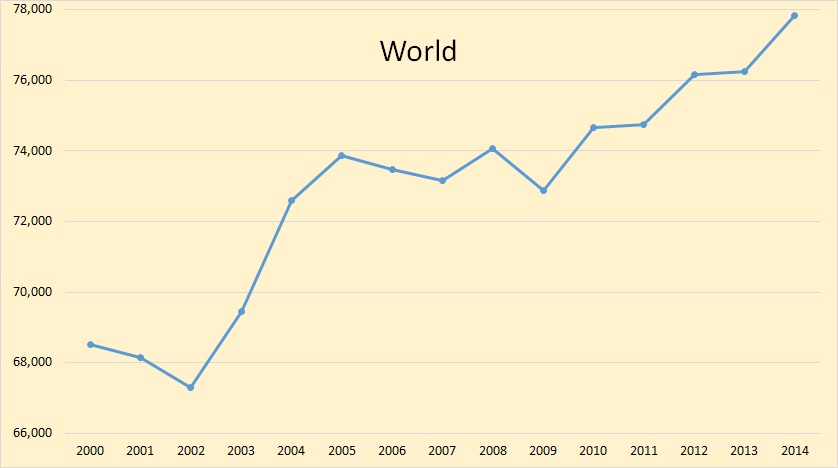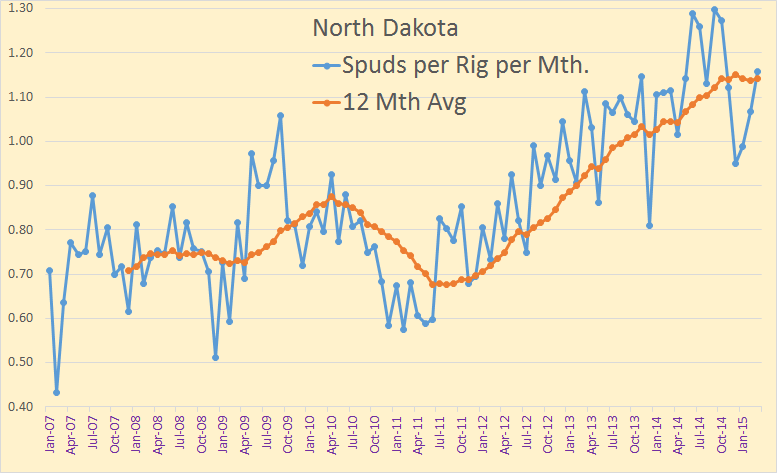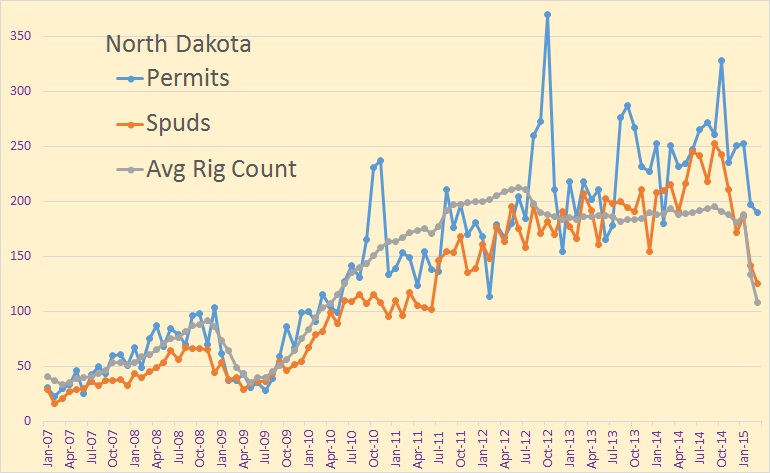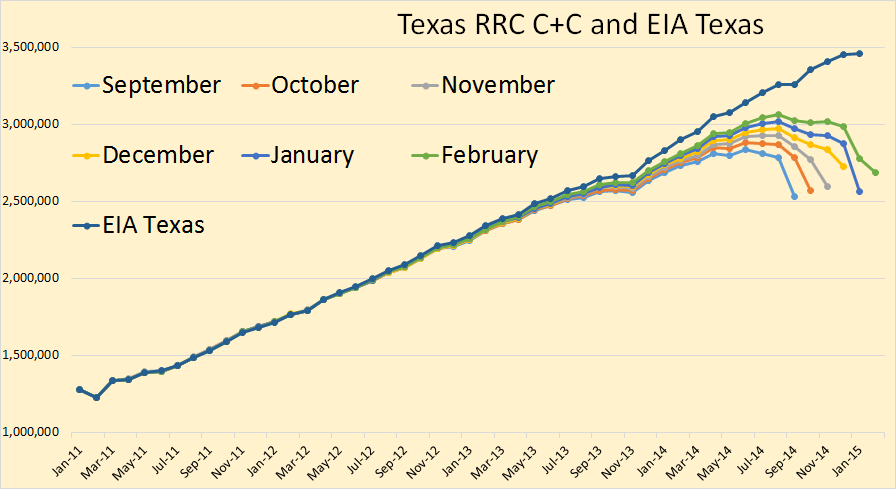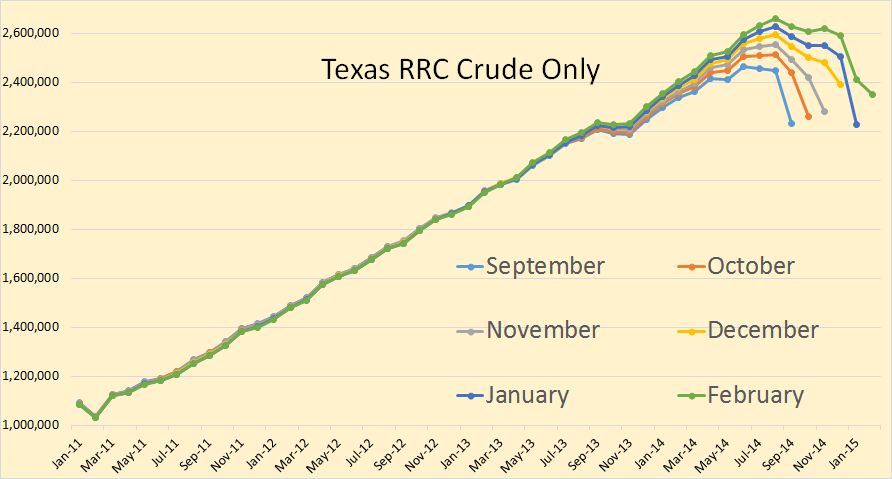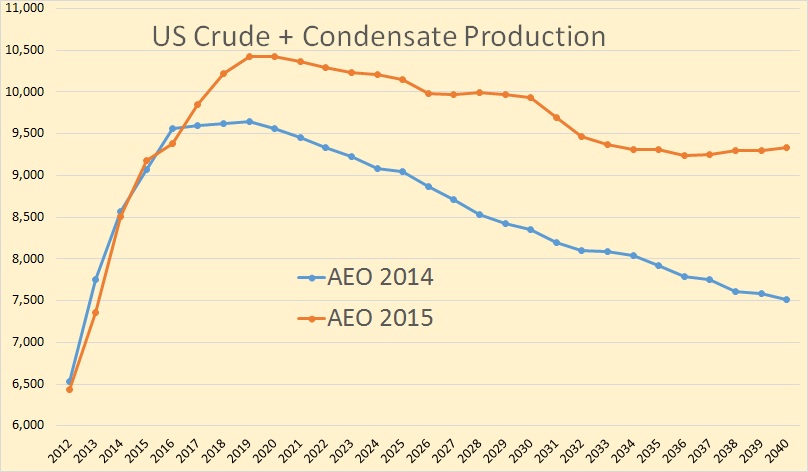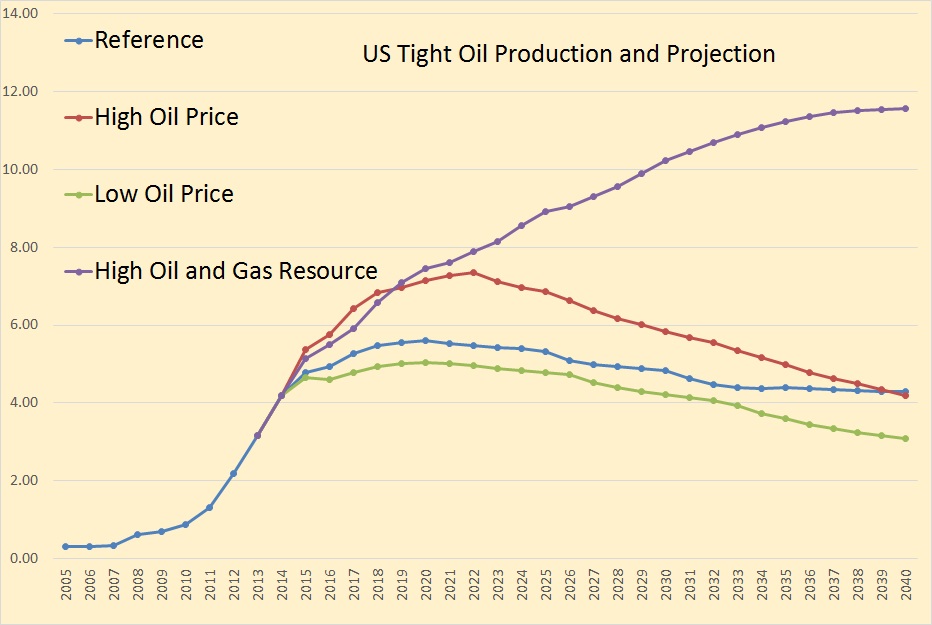Since around 2005 many countries have increased their oil production but more have decreased. But the combined production of the United States and Russia have kept the world on a slight uptrend since that time.
World oil production jumped in 2011, hardly moved at all in 2013 but it was up by more than 1.5 million barrels per day in 2014. And after such a huge gain everyone and their brother were singing “peak oil is dead’. But if you scroll down through the 37 major world oil producers it becomes obvious that a majority of nations have peaked and most of them are in steep decline.
The above chart is EIA data however the next four charts below are JODI data with the last data point February 2015. The data on all charts is thousand barrels per day.
